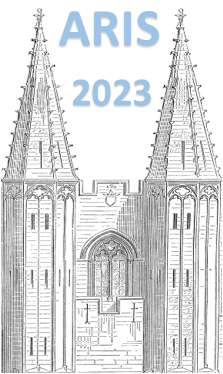Orateur
Description
The focus of this work is on the Fe and Mn neutron-rich isotopes with $N\sim40$, which lie within one of the so-called Islands of Inversion. Here, a quenching of the $N=40$ shell gap allows deformation to develop in the ground-state configurations. Limited spectroscopic information is available in the region of $N\sim40$ below the Ni isotopes. For the even-even nuclei, this consists of systematics of 2$^+_1$ and 4$^+_1$ state energies and, for the Fe and Cr isotopes, of $B(E2; 2^+_1\rightarrow 0^+_1)$ values up to $^{68}$Fe and $^{64}$Cr. Large-scale shell-model calculations well reproduce the energy systematics of the observed low-lying states of the even-even Fe and Cr isotopes around $N=40$. A good agreement is found also within the rotational Nilsson model. Such two descriptions, however, provide different predictions for proton spectroscopic factors. A measurement of such quantity would thus allow us to probe the validity of the considered models.
In this context, proton knockout reactions on the neutron-rich $N=38$ and $N=40$ isotopes $^{64,66}$Fe and $^{63,65}$Mn have been performed to investigate the proton spectroscopic factors of the parent nuclei. The experiment took place at the NSCL laboratory in the US and exploited the $\gamma$-ray tracking array GRETINA coupled to the S800 spectrograph to perform an in-beam $\gamma$-ray spectroscopic study. Preliminary results of the data analysis will be presented.

